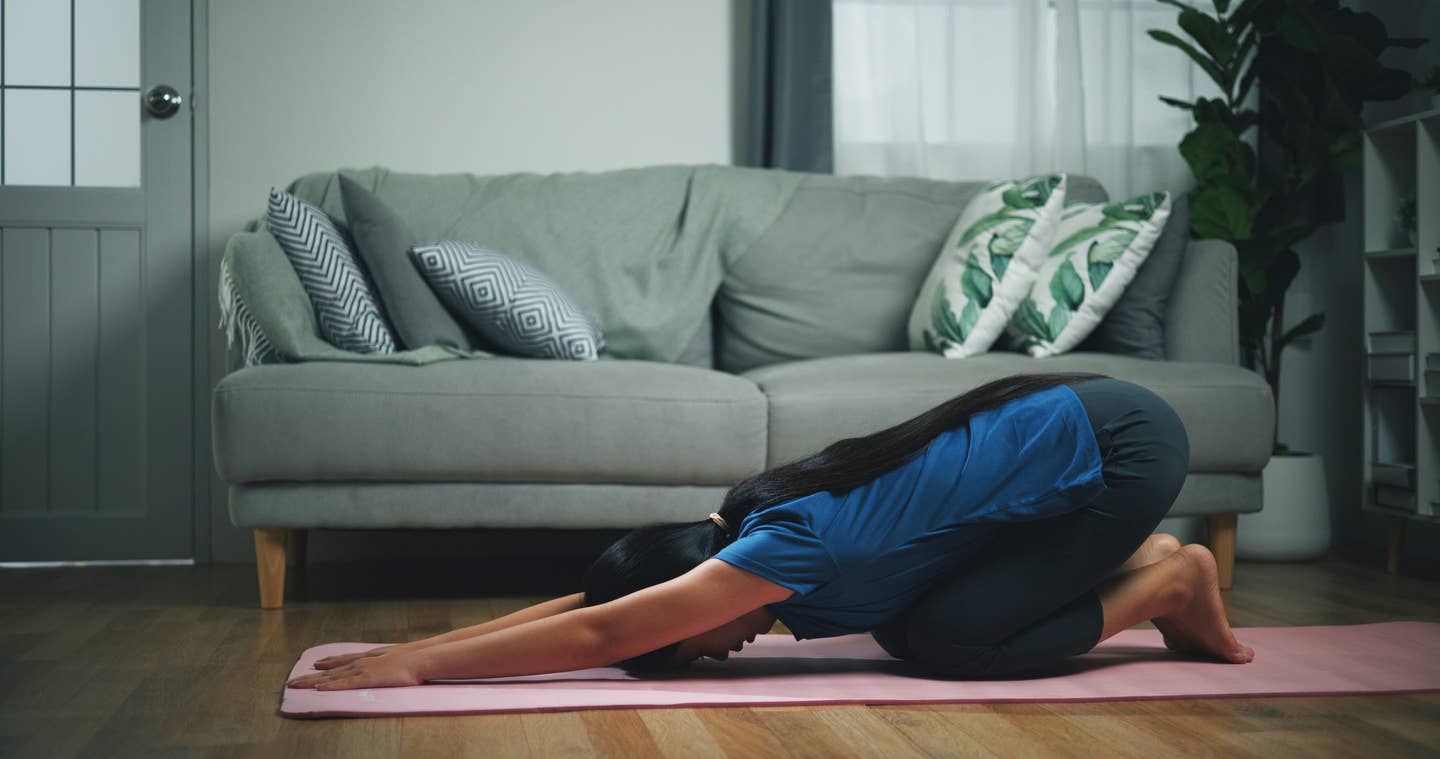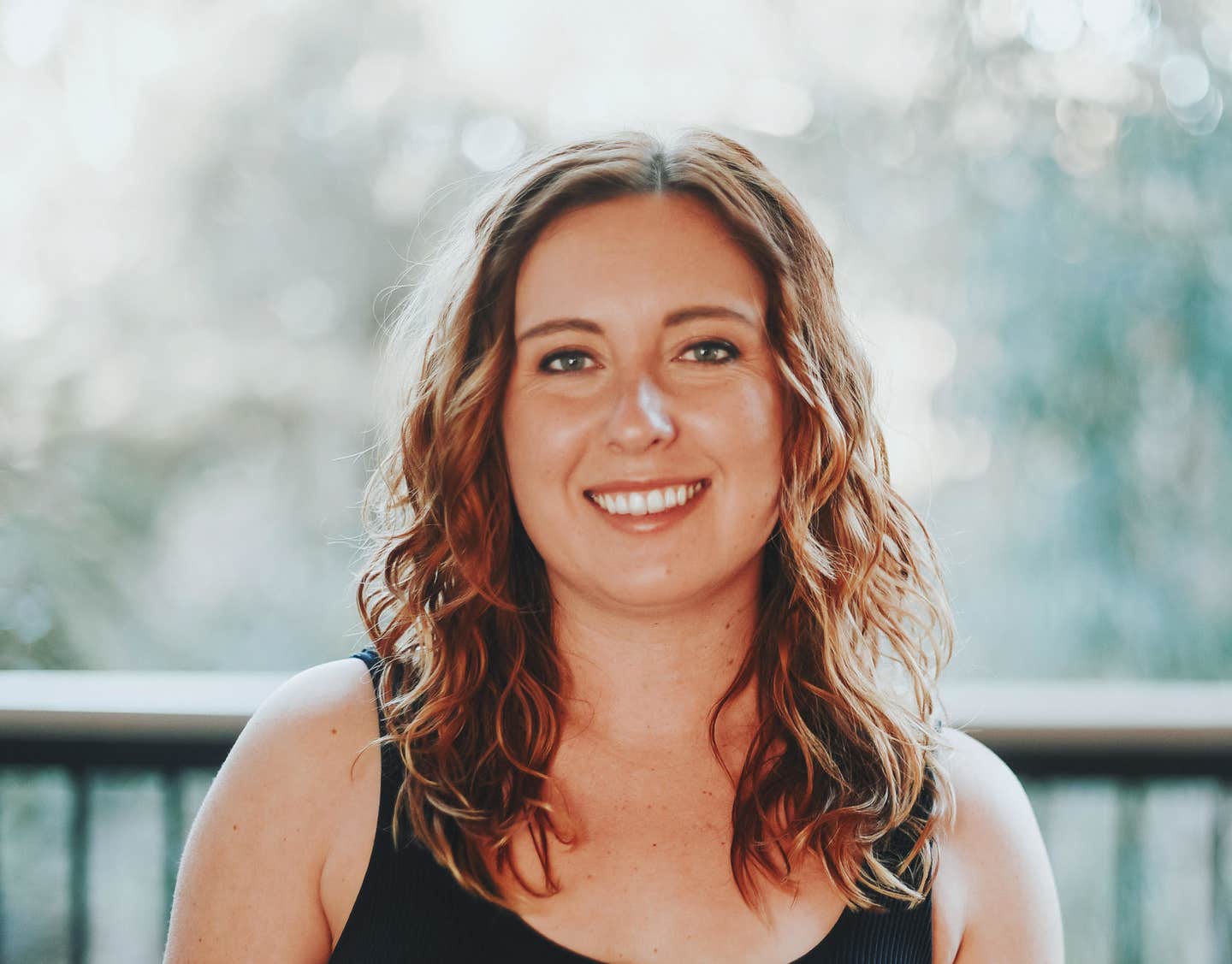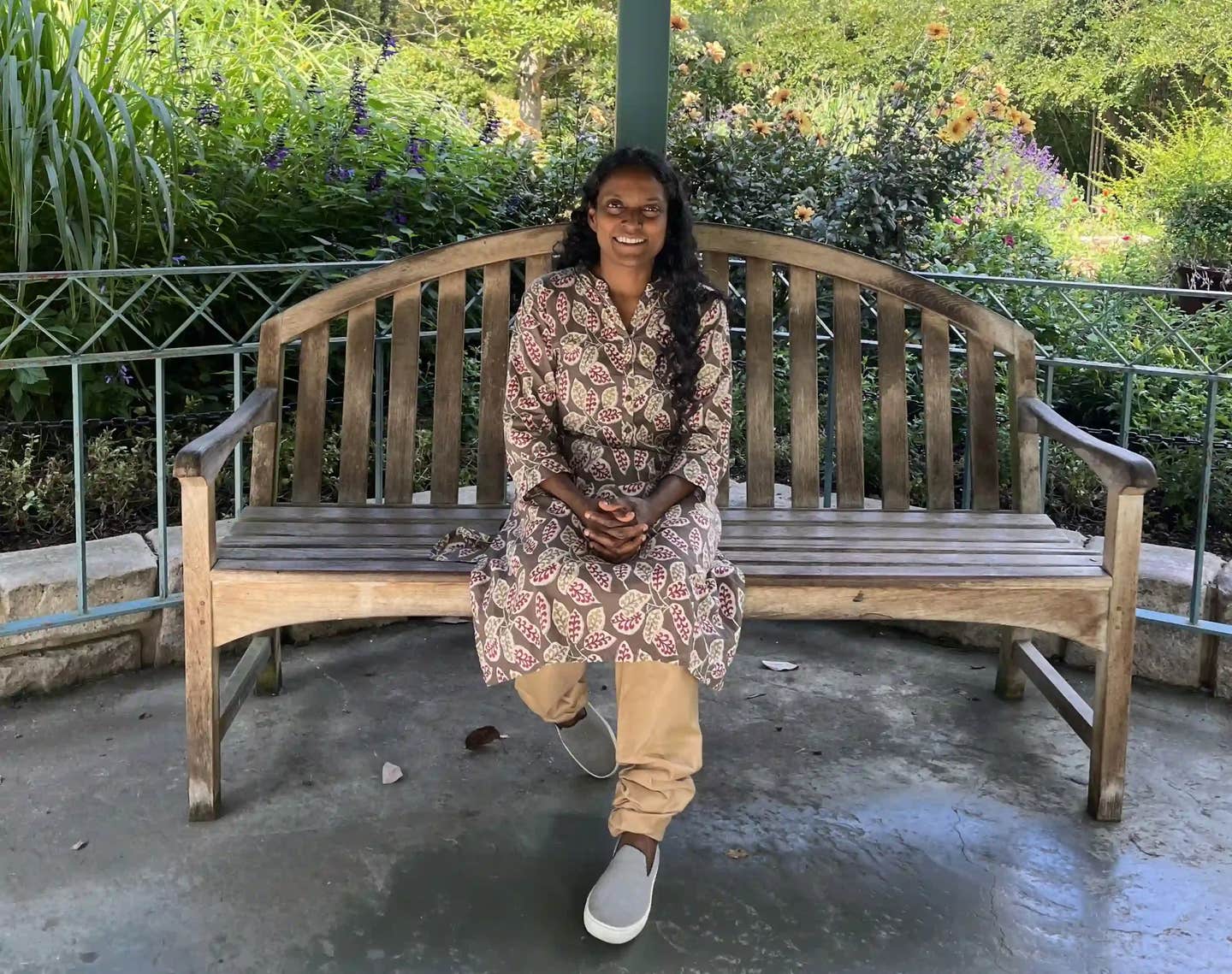
Can’t Sleep? Try One of These Restorative Yoga Poses at Bedtime
Struggling to wind down at night? Practicing a few gentle yoga poses before bed can help signal to your body and mind that it’s time to rest. Restorative yoga emphasizes comfort and stillness, with each posture held for 10 to 25 minutes using supportive props like pillows or blankets. The primary purpose of these poses is to support your tired body instead of stretching it, so flexibility or strength won’t be your focus when you’re trying to wind down for the night. The next time you can’t sleep, try one of these relaxing restorative yoga poses to help you drift off to dreamland.
Legs Up the Wall (Viparita Karani)
If you’ve ever taken a yoga class, it’s highly likely you’ve heard the teacher recommend this pose for improving your sleep. Elevating your feet above your heart improves circulation in the torso and head so your heart rate can slow down, your muscles can relax, and your digestive system can function with more ease.
- Lay down on your back so that your legs are parallel to a wall or the edge of your bed.
- Using your hands to help, scoot and rotate your body until you are perpendicular to the bed or the wall and your legs can stretch vertically up the wall or hook over the top of your bed. Allow your arms to rest anywhere that feels comfortable.
- You may need to inch your butt closer toward the wall or bed once your legs are elevated so that they are as straight as possible, but only go as far as feels comfortable for you.
- If you feel any pressure in your low back, you can place a pillow or folded blanket underneath your tailbone/low back for added support.
Child's Pose (Balasana)
This classic seed-like shape is a gentle and effective yoga pose for mellowing out a busy mind so you can catch some Z’s. While you’re welcome to do child’s pose without any props, placing pillows or a bolster underneath the torso is extra supportive and can feel incredibly soothing when sleep isn’t coming easily.
- Kneel on the floor or your bed. Bring your big toes to touch and open your knees out as wide as feels comfortable.
- Lower your torso down between your thighs until your head touches the floor or can rest on a prop, such as a pillow. Extend your arms overhead or stack one palm on top of the other to create a pillow for your forehead to rest on.
- Alternatively, place a yoga bolster or pillow in between your legs so that one end is wedged between your thighs. Keeping knees wide, lower your torso down onto the prop so that your belly, chest, and head are supported by the cushion. You can wrap your arms around the top of the prop or underneath it.
Supine Twist (Supta Matsyendrasana)
This gentle twist is a treat for your body, mind, and spirit. There are many ways to approach the shape of your legs depending on the mobility of your hips, so find a position that’s comfortable but still encourages a lengthening sensation down the spine and legs. Gently rotating throughout the torso helps loosen tight muscles that could be preventing your nervous system from entering a relaxed state where deep sleep is possible.
- Lie flat on your back on the floor or on your bed with legs extended out long. Pull your left knee into your chest and gently draw it toward the right side of your body until your knee touches the floor or bed. If that’s difficult, you can also prop a pillow under the knee to raise the height of the floor.
- Keep your right hand on your bent knee as an anchor and extend your left arm out to the side. If it is hovering in the air, place a pillow underneath it so you can fully relax into the twist. Gently turn your neck so you’re looking out over your left palm.
- When you’re ready for the other side, unwind from the twist and return to a flat back. This time, keep the left leg long and pull your right knee up and over your body. Your left hand will remain on the bent knee as your right arm extends out to the side.
Seated Forward Fold (Paschimottanasana)
In yogic philosophy, forward folds are believed to be calming for the mind and spirit. Physiologically, placing your head below your heart uses gravity to deliver blood to your brain, which takes some pressure off the heart and improves circulation. (If you have high or erratic blood pressure, exercise caution with this one.) This yoga pose will gently stretch the back of your legs and low back to help relieve sleep-disturbing tightness that can build up in those areas.
- Sit on the floor or your bed with legs stretched out long, keeping as much of a bend in your knees as you need to feel comfortable.
- Hinge forward from your hips and allow your arms to drape alongside your legs. (There’s no need to grab your feet and pull yourself deeper, just allow gravity to do the work with this stretch.)
- If you have a tight low back, sit up on a pillow or bolster to give your pelvis more room to hinge forward. You can also place soft props across the top of your legs to rest your torso, arms, and forehead on.
Crocodile Pose (Makarasana)
While this restorative yoga pose might not look like anything fancy, it’s a great way to ground jittery energy and reconnect to the power of deep, intentional breaths. If you’re a belly sleeper then you’re probably used to a similar position, but try doing this position on the floor instead of the bed so that your spine stays in better alignment.
- Lie flat on your belly. Stack one hand on top of the other while the elbows flare out to the sides. Rest your forehead on your stacked hands like a pillow.
- If your low back gets sore at any point, bend your knees so your toes point up toward the ceiling and gently sway your shins through the air from side to side.
Pigeon Pose (Kapotasana)
Also known as “sleeping swan” in the yin tradition, this classic posture is great for opening up tight hips, releasing stagnant emotions, and loosening the body to prepare it for restful sleep. This involves a little bit more active stretching than some of the other postures, so only choose it if you feel like you can comfortably relax into it and maintain a steady, slow breathing pattern. If it requires excessive effort or causes agitation, it’s likely not the best pose to help you feel drowsy.
- Start on your hands and knees on either the bed or the floor. Gently slide your left knee up toward your left wrist until your shin is positioned under your chest at a diagonal. Your ankle will likely be near your right hip joint. Extend your left leg behind you, keeping the top of your foot facing the floor.
- Keeping your pelvis squared, sink your weight down into your hips without rolling off onto your left glute.
- Slowly lower your torso over your bent left leg so that you come down to your forearms. If you’re quite flexible, you might even lower your chest and forehead down to the floor and fully extend your arms forward on the floor or bed. For a more supported version of the pose, place a yoga bolster or a pillow underneath your torso to rest on and wedge a folded blanket underneath the hip of your bent leg to support your pelvis.
- To switch to the other side, press into your hands to lift your torso and slowly make your way back to hands and knees. Repeat on the other side by sliding your right knee toward your right wrist and extending your left leg long behind you.
Supported Bridge (Setu Bandha Sarvangasana)
While an active bridge pose is known as a glute and hamstring buster, the supported version is a beautiful restorative posture that alleviates tight hips and gently lulls the body into a more tranquil state. This is another great pose to do directly in bed so that once you feel snoozy you can simply move the props out from underneath you and go straight to sleep.
- Lie on your back on the floor or in bed. Bend your knees so your feet are flat. Pick up your hips so you can slide a pillow or a yoga bolster underneath. It should be supporting your entire pelvis and low back.
- Allow your arms to rest on the ground with fingers pointing toward your feet.
- Gently tuck your chin toward your chest so you maintain a long neck and anchor down gently through your shoulders and back of the head.
- Your knees can stay bent or you can extend legs out long if that feels comfortable in your low back.
Build a Relaxing Routine
Feel free to create a mini sequence using several of the poses listed above, or pick just one that helps lull you to sleep. A calming bedtime routine might even involve a few restorative poses before a short yoga nidra meditation to really ensure your body and mind are ready for rest. Relaxation is a practice, so it’s time to get started!
About the Author

About the Author
Megan Edwards
Join our mailing list
Get free recipes and the latest info on living a happy, healthy plant-based lifestyle.
By providing your email address, you consent to receive newsletter emails from Forks Over Knives. We value your privacy and will keep your email address safe. You may unsubscribe from our emails at any time.
